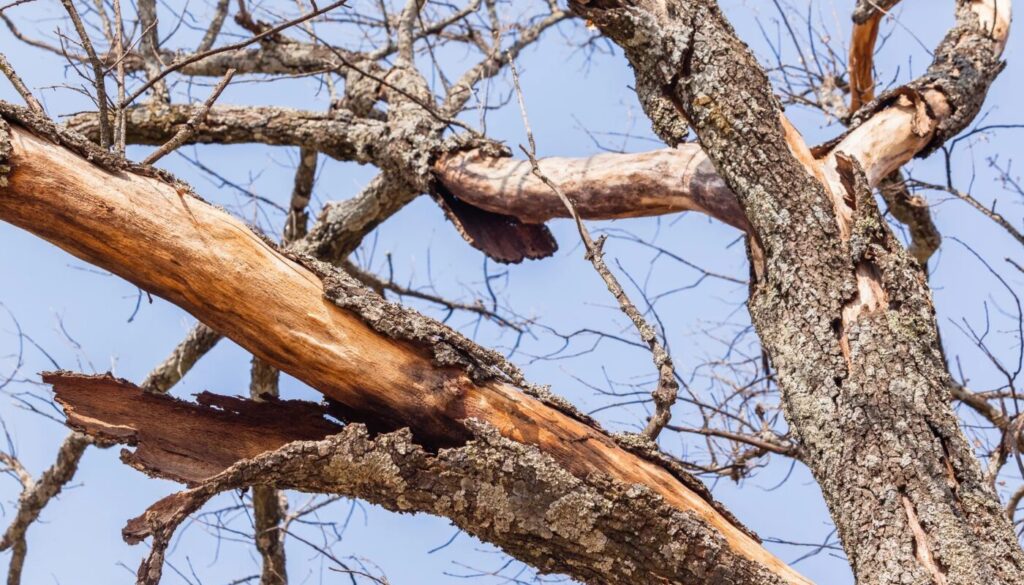How to Spot the Early Signs of a Dying Tree

Trees are a vital part of your property’s beauty and ecosystem, but just like any living thing, they can get sick — and sometimes, they die. The trouble is, it’s not always obvious until it’s too late. At Sequoia Tree Services, we believe in proactive care. Catching the signs early can save your tree — or prevent a dangerous fall before it happens.
Here are some common red flags to look out for:
1. Bark That’s Peeling or Missing
If large sections of bark are flaking off or falling away, that could be a sign the tree is no longer healthy. Bark protects the inner layers — once it’s compromised, the tree is vulnerable to disease and decay.
2. No Leaves or Sparse Foliage
A tree that fails to leaf out in the spring, or has patchy, thinning leaves in summer, might be in trouble. Compare it to nearby trees of the same species. If yours looks behind, it’s worth investigating.
3. Dead or Dropping Branches
Dead branches, especially near the top or outside of the canopy, are a red flag. Watch for sudden drops — limbs that fall in calm weather could indicate internal weakness.
4. Mushrooms or Fungus at the Base
Fungus growing around the trunk or roots often means rot inside. Not all mushrooms mean doom, but it’s best to have a pro take a look.
5. Cracks or Cavities in the Trunk
Deep cracks or hollowed sections are signs of structural failure. These trees can be hazardous, especially in high-wind or storm-prone areas.
6. Root Issues
Heaving soil, exposed roots, or a tree that seems to be leaning more over time — these are all signs of root damage or instability.
What To Do If You’re Unsure
If you spot any of these warning signs, it doesn’t always mean the tree needs to come down — but it does mean it’s time for a professional assessment. Our certified arborists can help you decide if your tree can be saved, or if it’s time to remove it safely.
Sequoia Tree Services
14719 Bayham Dr, Tillsonburg